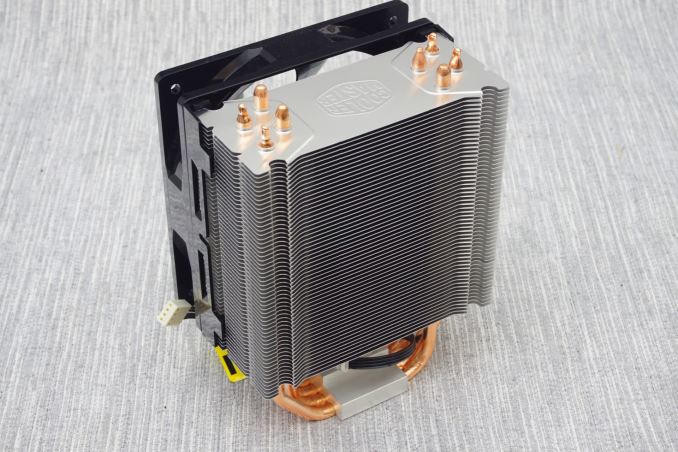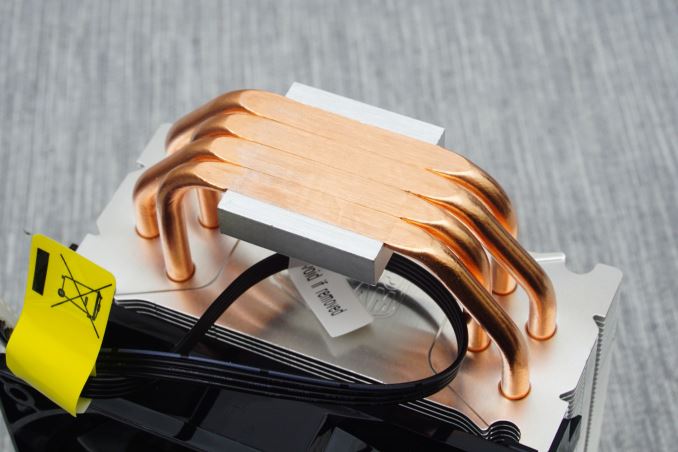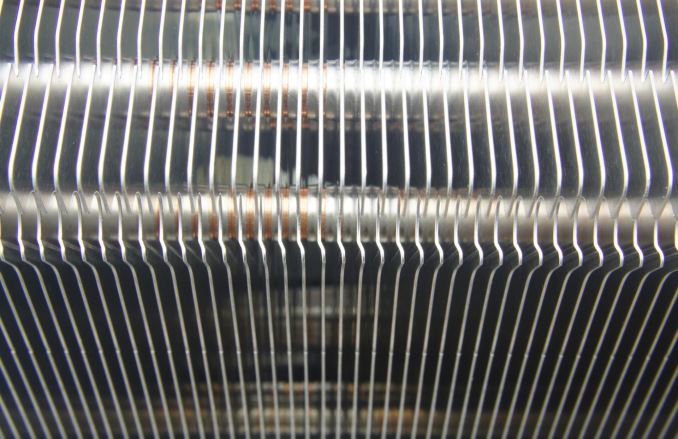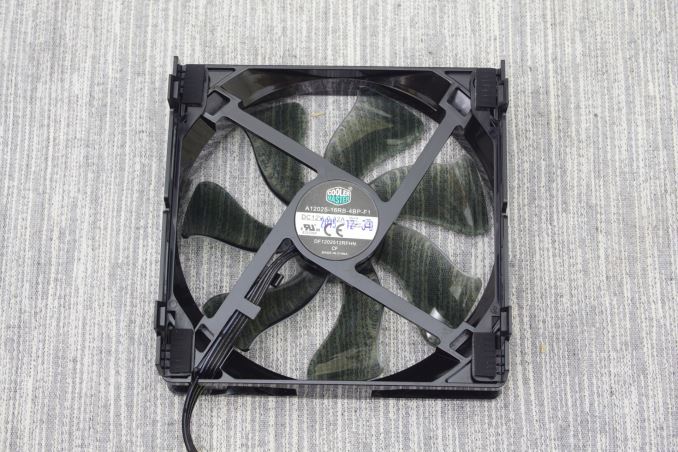Battle of The CPU Stock Coolers! 7x Intel vs 5x AMD, plus an EVO 212
by E. Fylladitakis on July 22, 2016 9:00 AM EST- Posted in
- Cases/Cooling/PSUs
- CPUs
- AMD
- Intel
- Cooler Master
- Cooler
The Cooler Master EVO 212
The Cooler Master EVO 212 is the “special guest” of this review. We included it because it is one of the most popular mainstream coolers, combining good performance with broad compatibility and a very reasonable retail price. Although we do have one more aftermarket cooler in this review, it comes from a CPU manufacturer and is essentially based on the designs of their stock coolers, so the EVO 212 is the only cooler that greatly stands out from the rest.
The EVO 212 is a tower cooler with four copper heatpipes and a vertical 120 mm fan. It is designed to absorb the thermal energy away from the CPU and transfer it to wide aluminum fins using the heatpipes. Then the energy is being transferred to the airflow generated by the fan more effectively, as the surface of the many parallel aluminum fins greatly outweighs that of most stock coolers.
What makes the EVO 212 so efficient and popular is the direct contact design. The heatpipes come in direct contact with the CPU’s surface, increasing the energy absorption efficiency. Copper is soft and easy to damage, thus this design has greatly inferior mechanical strength than most other tower designs that have the heatpipes supported inside a metal base, but this has virtually no shortcomings for most users that will not be mistreating their computers (as well as being indicative of the pricing).
Other than the direct contact heatpipes, the EVO 212 has no other advanced features. Naturally so, as the company wanted to keep the manufacturing cost low. The aluminum fins are inserted to the copper heatpipes and not soldered, while the base is not machined down to a perfect finish. The cooler’s A12025-16RB-4BP-F1 120 mm fan is a small surprise, as it has a rifle bearing engine, an enhanced version of sleeve bearing designs for lower noise and higher durability.
| Vendor | Cooler | Common Bundle | Core | Fins | Fan (mm) |
Mass (g) |
| Cooler Master | EVO 212 | Aftermarket, ≈$30 | Cu +4 Cu HP |
Alu | 120 | 436 |















82 Comments
View All Comments
bigboxes - Friday, July 22, 2016 - link
Yup. My Athlon X2 4400+ (Toledo) came with a 4-pipe cooler as well. Never used the stock HSF when it was in my main rig. Got a Zalman which was badass at the time. Used the stock HSF when I moved the Athlon 3200+ (Winchester) to my file server.Marburg U - Friday, July 22, 2016 - link
OK, but just to recall that DB scale is a logarithmic scale. And the difference between 44.7 and 46.3 is roughly 45% power ratio!!!ZeDestructor - Friday, July 22, 2016 - link
Perceptually though, odds are you won't observe a difference in loudness (tone is a whole different ballgame): 3dB is the generally accepted number for human hearing to be able to perceive a difference in volume, and 10dB for a perceptual halving of volume.DanNeely - Friday, July 22, 2016 - link
But also remember that your ears are a logarithmic sensor. So while 10 dB is 10x the sound intensity, it only sounds twice as loud. In this case the 1.6 dB only corresponds to sounding about 15% louder; which is barely noticeable. Other factors like your case material (type, thickness, if sound deadening material is present, locations of fan holes, etc) affecting how much sound gets out from the CPU cooler; and the number, type, and layout if your case fans affecting how hot the internal ambient is and how hard your CPU cooler has to work will all have more significant impacts on how loud your system is.pseudoid - Friday, July 22, 2016 - link
Ummmmm....Logarithmic scale to measure Sound Pressure Levels (SPL) are normally a relative measurement based on voltage (not power). As such, an order of magnitude increase (10X) results in a 20dB (not 10dB) increase in SPL. Keeping with the same SPL measurements, a doubling (octave) or an increase of twice as loud (2x) is a 6dB increase! No need to bring up Fletcher-Munson curves into this correction. Cheers!
hailey14 - Friday, July 22, 2016 - link
"With bulk PC orders it is, of course, a "difference" scenario..."some typo.
Calculatron - Friday, July 22, 2016 - link
Wow, I knew the Wraith cooler is good, but I didn't realize that it was that good.I have the "quiet" 125 TDP cooler solution, which is the Wraith Cooler without the fancy shroud - same heatsink and fan, though. Maybe I'll keep it around...
Lolimaster - Friday, July 22, 2016 - link
The thing intel non 2011 socket cpu's uses complete trash internal dissipation compound, another reason to not sell it with stock cooler.Even with a decent one (juper 212z) you see load temps of 75°C without OC. Meanwhile their new Broadwell-E stays within the 50°C (+/- 2°C) with a similar cooler.
AMD didn't screw up users with the IHS dissipation.
ZeDestructor - Sunday, July 24, 2016 - link
As many have stated before, Intel has to use TIM on the small cores because the small cores crack from repeated thermal shock when soldered to the IHS. Intel doesn't want to screw you over, but they literally have to! Or do you want 32nm and larger lithographies back?Ascaris - Sunday, July 24, 2016 - link
They could use a bigger chunk of silicon wafer to help with heat dissipation/bond to the IHS without printing anything on it. It's not as if the smaller litho chips have gotten cheaper because of less silicon usage!